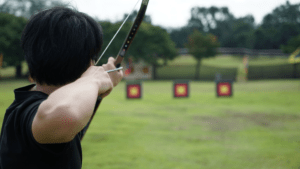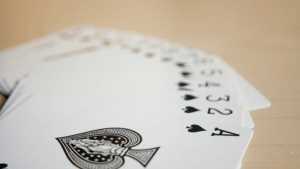
Recently, I took a course on resilience. Given everything we are all going through, it seemed prudent.
I expected to hear a lot of the same old, same old. About getting enough sleep, eating right, and self-care.
What I didn’t expect was to walk away rethinking my approach to personal growth.
The not-so secret of athletes
The instructor challenged us to consider the business of being an athlete. They have to perform consistently under pressure, often in highly variable conditions and environments.
In order to “win,” an athlete must have a goal and a plan on how to achieve that goal. Then, their not-so-secret is all about practice. Practicing, evaluating the results, and making adjustments to improve.
This is not news or particularly enlightening. What was enlightening was the idea of using this approach to mental and emotional resilience. To choosing how to act, instead of react, in challenging situations to achieve our goals.
1. Identify the goal
If we think of ourselves as athletes, the first step is for us to identify a goal. It can be personal or professional, but something that we aspire to. When it comes to mental and emotional resilience, we framed our goals relative to how we show up for ourselves and others.
In my case, I decided that I want to be a more loving and patient mother with my son. With virtual schooling, my frustration level can accelerate quickly. I’d like for my son to feel supported and capable, instead of any number of other feelings when I’m not at my best.
2. Develop a training plan
Once we know our goal, we can develop a training plan on how to achieve that goal. When planning our mental and emotional response, we would need to understand potential triggers and a script of our preferred response.
Triggers are those hot buttons that cause us to react, instead of purposefully responding.
For me, there’s nothing more frustrating than a time crunch and someone capable acting helpless. I can remember my son sitting down in the hallway before the bus would come, asking for me to tie his shoes, years after he learned for himself. Many a Monday morning included feigned helplessness and me losing my cool.
Years later, it’s the same formula and frustration. Assignments are due, he acts like he doesn’t know what to do or how to start, and I get all sorts of riled up. I’d like to break the cycle.
In comes the script. I know I want to be better, but find myself in the cycle over and over again. With a script, I can write down a few alternatives of how I’d like the conversation to go. What I wish I said every darn time this happens.
3. Practice
It’s not enough to have a plan, we have to execute on the plan. Athletes don’t go straight to game time. Instead, they practice over and over and over again. Until their actions are muscle memory.
For our mental and emotional response to work on game day, we have to practice. To rehearse.
This is where I am right now. I am carving out time when my son isn’t around (which isn’t always easy) to rehearse my words. To say them out loud and see how they feel. Adjust them so it feels natural.
Practicing over and over helps ensure we don’t need a cue card. So we can say what we want without sounding rehearsed, yet genuine. For me, it’s sounding like the mom I aspire to be.
4. Just do it
Now it’s game day and time to get our Nike on. Just do it…try the thing we’ve been practicing for.
In my case, we have end of quarter grades due at the end of the week. Part of my trigger, the time crunch, is guaranteed. If my son acts helpless, I have the opportunity to use the words I’ve been practicing. To respond purposefully, instead of reacting and getting frustrated.
Did I mention that the first step in my script is to remember to breathe before responding? Not sure about anyone else, but I think that’s a good one to add to just about any planned response.
5. Reflect and adjust
Just like athletes, we aren’t always at our best. We won’t always do exactly what we intended. Sometimes we drop the ball or miss a pass.
There are two options following a bad game. We can see it as a failure, or an opportunity to learn and improve. Rarely in life are our goals achievable in one moment. In most cases, like with athletics, there’s another day and another game to try again.
If we find that our script isn’t working as intended, we can adjust it. Practice more. Try again. Maybe we find that it does work, but maybe the goal we thought we wanted isn’t the right fit. We can go back to any step in the process and start again.
Following quarter-end grades, I plan to reflect back on how the conversations went with my son. Hopefully they went well. Even if they do, I’m sure there will be something I can learn from and take into next quarter.
Achieving mental athleticism
What I love about the idea of mental athleticism is that it’s accessible to everyone. We can all apply the discipline of an athlete, without leaving home or breaking a sweat.
No matter our goals, we can consistently set up a plan, practice or rehearse our intention, put it into practice, and then refine our approach. Whether we want to eat healthier, improve our relationships, advocate for ourselves…the use cases are endless.
I brought the mindset of an athlete to my training and “game day” when I was running races and doing long-distance rides. Bringing the same mindset to building mental and emotional resilience, as I do physical resilience, was an unexpected “aha” moment. One I hope others will utilize to achieve their own goals.








